‘This great national work’, recalling the bicentenary of Donaghadee’s harbour
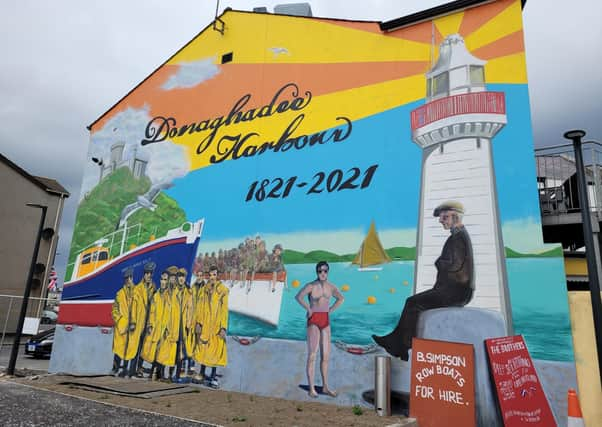

Trips to Donaghadee would have been spent dodging the wind and the rain during the winters and treating myself to an ice cream.
And so it was on the weekend of the bicentenary of the laying of the foundation stone of the harbour by the Marquis of Downshire in August 1821 that I found myself strolling along the pier with my wife.
Advertisement
Hide AdAdvertisement
Hide AdThat walk along the pier, as dark clouds gathered over the lough, made me think about how the News Letter might have reported that happening. I was delighted when we returned home that a quick search of the online newspaper archive that I use so much for this supplement came up trumps.
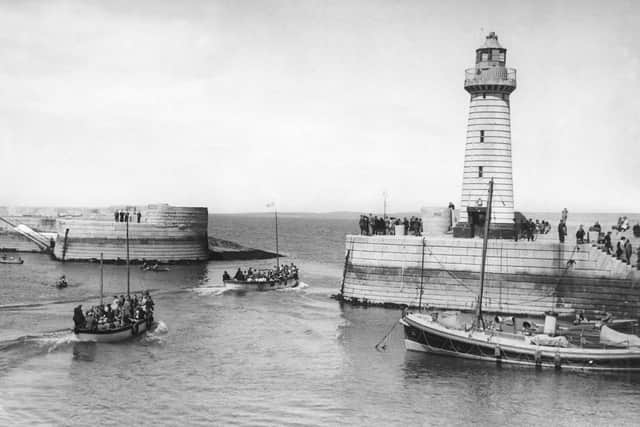

EXCVATION HAD CREATED AN AMPHITHEATRE
The News Letter carried a detailed account of laying of the foundation of the new harbour in it’s edition of Friday, August 3, 1821. The report began: “Wednesday, the first of August, having been appointed for the laying of the first stone of the new harbour of Donaghadee, every necessary preparation was accordingly made for the commencement of this great national work.”
The News Letter continued: “The site of the foundation stone is a short distance from the back of the present pier. Here an immense bed of rock has been excavated to the depth of 24 feet, and from the shape of the excavation it was found extremely well adapted for being fitted up with seats in the form of an amphitheatre, which afforded the best accommodation that could be desired of the ladies and gentlemen who joined the proceedings of the day.
“The spot on which the stone was to be laid, was on a level with the lowest tiers of seats, and directly in front thereof, so that the whole multitude who attended had a full view of the ceremony.”
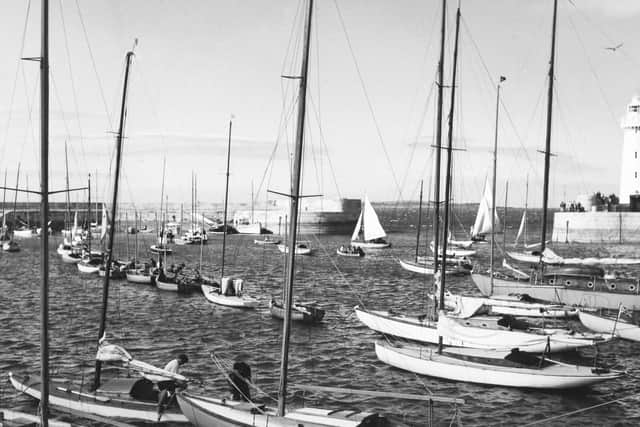

Advertisement
Hide AdAdvertisement
Hide AdThe Most Noble the Marquis of Downshire having been requested to officiate upon the occasion, his Lordship, accompanied by the Marchioness and Lord Arthur Hill, arrived at Donaghadee on the afternoon of Tuesday, July 31, They were received a “most cordial welcome”, for when the workmen engaged in building the harbour learned of the expected arrival of his Lordship, “went a mile out of town, where they stopped his carriage, and, notwithstanding every entreaty to the contrary, they took off the horses and drew his Lordship and family, amidst loud acclamations” They then brought the Marquis of Downshire to the house of Mr Edward Hull, “where after giving three hearty cheers”, they returned to their work “in the greatest order”. His Lordship and his family dined and spent the evening with the Hulls, and slept there. “A number of other respectable of other respectable company were of the party,” reported the News Letter’s correspondent from Donaghadee.
‘LABOR IPSE VOLUPTAS’
The following day at twelve o’clock, all the men engaged in building the new harbour were dressed in their best attire, “each of them with new white pantaloons”. Having ranged themselves in proper order, and carrying flags with “suitable inscriptions”, they walked from the shore and drew up at Mr Hull’s house, where, after a few minutes, his Lordship joined them, and the procession moved off in the following order: Constables and their staves, labourers, four abreast, quarry-men, blacksmiths, carpenters, masons and overseers, on either side these men were flanked by labourers, “two abreast”. There then followed the Royal North Downshire Militia Band, the superintending engineer, “with Plan of the Harbour”, clerk to the commissioners, “with the Harbour Act”, the secretary to the commissioners. Then came the Marquis of Downshire, first commissioner, supported on the right by Nicholas de la Cherois Crommelin, Esq, high sheriff, and on the left by Lord Arthur Hill, MP, for the county, then came Daniel Delacherois, Esq, James Arbuckle, Esq, the Reverend Francis E Lascelles, John G Dunbar, Esq, Samuel Delacherois, Esq. A number of other gentlemen from different parts of the country also joined the procession. And at the back there came the stone-cutters and labourers, “four abreast”.
The following flags were also displayed as part of the procession: Labourers ’ and artificers’ first flag, “Labor ipse voluptas”, “Labour itself is pleasure”, the engineers’ flag, “Deo juvante”, “With God’s assistance”, the secretary’s and clerks’ flag, with the Act, “Le Roi le vent”, “The King wills it”, the Marquis of Downshire’s flag, “Non sibi sed patriae”, “Not for himself but for his country”, the commissioner’ two flags, “Faire sans dire”, “To act without ostentation”, “Rectus in Curie”, “With clean hands”, while the flag of the gentlemen who joined the procession read “Ducit amor patriae”, “The love of my country leads me on”, the labourer’s second flag, “Ora et Labora”, “Pray and work” and the labourer’s third flag read “Labor omnia vincit”, “Work overcomes everything”.
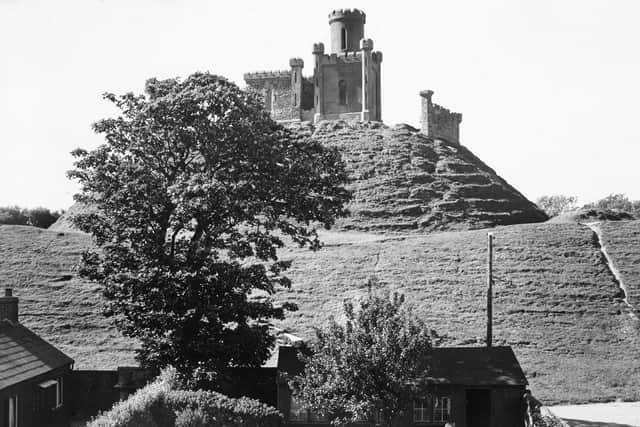

‘AFFORDING SHELTER AND REFUGE’
When the procession arrived at the appropriate place, the company took their seats on the benches that had been prepared for them, and the Marquis of Downshire, attended by Mr David Logan, the resident engineer, and Mr Campbell, the overseer of works, proceeded with “the business of the day”.
Advertisement
Hide AdAdvertisement
Hide AdThe News Letter’s correspondent noted: “A sufficient cavity having been prepared in the stone, a glass bottle containing sundry coins and testimonials tending to illustrate the ceremony, and history of the empire at the present period, was placed in it.”
Over this a plate bearing the following inscriptions was placed: “The first stone of the new Harbour of Donaghadee, was laid on the first day of August 1821, by the Most Honourable Arthur, Marquis of Downshire, for the purpose of facilitating and improving the northern communication between Great Britain and Ireland, and of affording shelter and refuge to the shipping navigating the channel.”
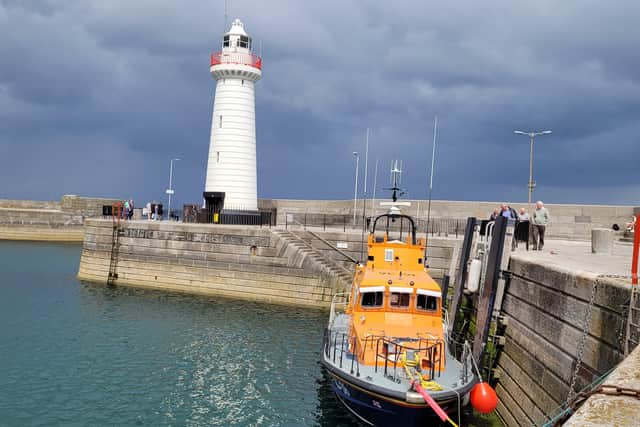

CONNECTION WITH ‘THE SISTER COUNTRY’
With this done his Lordship stepped forward and made a short address. He said: “I come forward for the purpose of taking some notice not only of the present happy and auspicious day, but also of those steps which have led to the accomplishment of so desirable an object as the improvement of the harbour of Donaghadee, so important as consideration in the intercourse between Great Britain and Ireland.”
His Lordship observed that from “a very remote period, even so far back as the reign of James I”, that the passage between Portpatrick in Scotland and Donghadee had been considered as “the most advantageous one, indeed as that pointed out by nature, from the greatest proximity of the two countries which is to be found between those two points”.
Advertisement
Hide AdAdvertisement
Hide AdHis Lordship referred to the patents granted by James I to Sir Hugh Montgomery, “for it was not a new proposition, or for new objects not sanctioned by our ancestors, that these persons were actuated who had materially interested themselves in the promotion of the improvements which had so happy a commencement” that day.
The Marquis of Downshire recalled “the period of the year 1790”, when, “some public-spirited individuals closely connected with this part of the country”, in which he had the pleasure of saying that his family had “heartily and zealously co-operated”, had formed a company for “affording greater convenience and facility” as as well as “safety to all persons from the kingdom of Ireland to the sister country”.
SILVER TROWEL PRESENTED TO HIS LORDSHIP
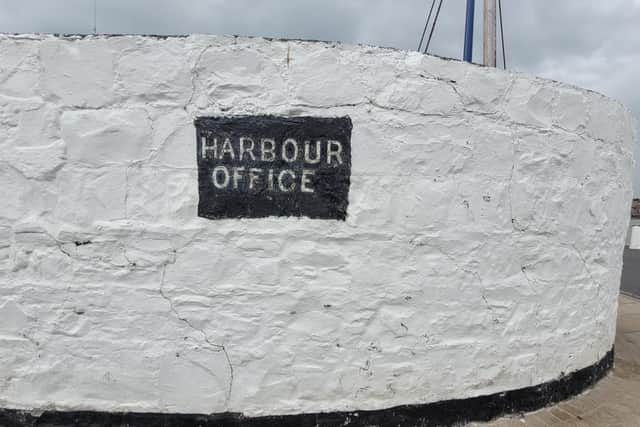

After the Marquis of the Downshire’s address Mr Delacherois came forward and returned thanks to the Marquis for “the active part his Lordship had taken in carrying into effect this object”, which he said that he conceived would be “found to be a great national one in every point of view”. Mr Delacherois said he could assure the public, that the commissioners would “discharge their duty with that zeal and fidelity”.
The Reverend Mr Lascelles then came forward to offered up a prayer, “extremely well adapted for the occasion”.
Advertisement
Hide AdAdvertisement
Hide AdDuring the concluding part of proceedings, noted the News Letter’s correspondent, that packet vessels in the harbour fired at intervals, and, when the whole was finished, “the surrounding multitude joined in loud huzzas, with waving of hats, &c.”
The silver trowel used by the Marquis of the Downshire, when laying the stone, was presented to the his Lordship. One one side a view of the intended harbour was shown, and on the other side the following inscriptions had been inscribed: “With this towel, the Most Honourable Arthur Blundell Sandys Trumbull Hill, Marquis of Downshire, Earl of Hillsborough, Viscount Hillsboroughm Viscount Kilwarlin and Baron Hill of Kilwarlin, in Ireland, Earl of Hillsborough, Viscount Fairford, and Baron Harwich, in Great Britain, Hereditary Constable of Hillsborough Fort, First Commissioner for improving the Harbour of Donaghadee, in Ireland, and First Commissioner for the improving the Harbour of Portpatrick, in Scotland, DCL, &c, &c, &c, laid the first stone of the harbour of Donaghadee, 1st day of August, 1821, in the second year of the reign of His Majesty George the Fourth.”
It then listed the names of the commissioners: the Marquis of Downshire, Earl O’Neill, Lord Arthur Hill, MP. James Hunter Blair, Esq, MP, Arthur Chichester, Esq, MP, Daniel Delacherois, Esq, Nicholas de la Cherois Crommelin, Esq, James Arbuckle, Esq, Edward Hull, Esq, James Gilmor Dunbar, Esq, Reverend Frances Edward Lascelles, Samuel Delacherois, Esq, John Rennie, Esq, principal engineer, David Logan, Esq, resident engineer, and Edward Leslie Hull, Esq,, secretary.
My thanks to PRONI for the permission to reproduce the old photographs of Donaghadee included in this article.
Comment Guidelines
National World encourages reader discussion on our stories. User feedback, insights and back-and-forth exchanges add a rich layer of context to reporting. Please review our Community Guidelines before commenting.